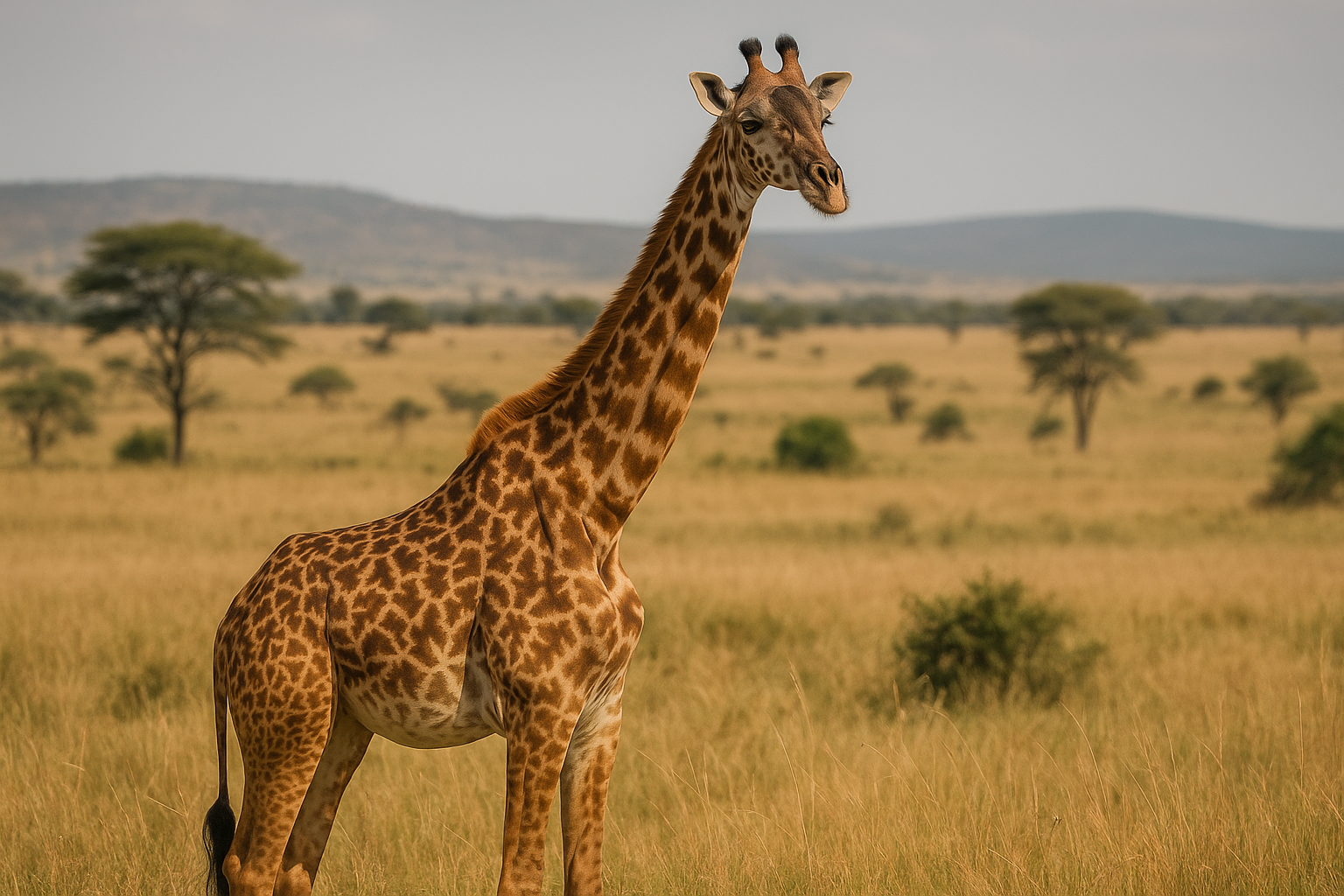The Ancient Hunter: The Life and Legacy of the Nile Crocodile
I. Introduction: Survivor of the Ages
Before the pyramids were built, before the Serengeti pulsed with migrating herds, before the lion earned its crown—there was the Nile crocodile. Silent, patient, and terrifyingly efficient, this creature is a living relic of the prehistoric world, a reptile that has survived nearly unchanged for over 200 million years.
In Africa’s slow, muddy rivers, it waits. A ripple. A flick of the tail. A sudden strike. And just like that, it reminds the modern world that the ancient ones are not gone—they're simply hidden in plain sight.
II. Scientific Classification: A Perfect Predator by Design
| Taxonomic Rank | Classification |
|---|---|
| Kingdom | Animalia |
| Phylum | Chordata |
| Class | Reptilia |
| Order | Crocodylia |
| Family | Crocodylidae |
| Genus | Crocodylus |
| Species | Crocodylus niloticus |
Why this classification?
-
Reptilia: Cold-blooded, scaly, egg-laying animals with lungs.
-
Crocodylia: Large, semi-aquatic reptiles known for powerful jaws, ambush hunting, and parental care.
-
Crocodylus niloticus: Named for the Nile River, where the species is historically common.
The Nile crocodile is one of the largest crocodilians on Earth, second only to the saltwater crocodile—and easily Africa’s most dangerous predator in the water.
III. Range and Habitat: From Riverbanks to Rift Valleys
Despite its name, the Nile crocodile isn’t limited to the Nile. Its range covers nearly all of sub-Saharan Africa, including:
-
Rivers (Nile, Zambezi, Limpopo)
-
Lakes (Victoria, Tanganyika, Turkana)
-
Swamps & marshlands
-
Man-made reservoirs & irrigation canals
From Ethiopia’s highlands to Tanzania’s vast lakes, from Chad’s arid wetlands to South Africa’s crocodile farms—Crocodylus niloticus is one of Africa’s most adaptable predators.
IV. Size and Strength: Evolution’s Perfect Weapon
-
Adult Length: 3.5 to 5 meters (11–16 feet), with some reaching 6 meters.
-
Weight: 400 to 1,000 kg (880–2,200 lbs)
-
Bite Force: Over 3,000 pounds per square inch (psi)
-
Speed: Up to 14 kph (9 mph) in water, bursts of 12 kph (7.5 mph) on land.
The Nile crocodile is a biological fortress: armored skin, low metabolism, and immense power. Its jaws can crush bone. Its eyes and nostrils are positioned on top of its head, allowing it to see and breathe while almost completely submerged.
V. Hunting and Feeding: The Art of Ambush
Nile crocodiles are ambush predators, known for their patience and explosive attacks.
How They Hunt:
-
Camouflage in water near riverbanks, eyes barely breaking the surface.
-
Wait for prey to drink or cross the river.
-
In a flash, lunge forward, clamping prey with vice-like jaws.
-
Drag the victim into water for the "death roll"—spinning to drown and tear apart flesh.
Diet Includes:
-
Fish, turtles, and birds
-
Antelope and zebras
-
Wildebeest during river crossings (e.g., the Mara River)
-
Occasionally humans and livestock
Crocodiles don’t chew—they swallow chunks whole or stash food underwater to rot for easier consumption. This has earned them the eerie name: “The River Butcher.”
VI. Social Behavior: Cold Blood with Complex Rules
Though solitary hunters, Nile crocodiles often share basking sites and feeding grounds.
Social Traits:
-
Establish dominance hierarchies, especially among males.
-
Display ritualized aggression—hissing, snapping, and posturing.
-
Occasionally hunt cooperatively, especially during mass migrations.
-
Bask together in groups called “basks” or “floats.”
While their expressionless eyes suggest indifference, their social rules are precise, shaped by millions of years of instinctual communication.
VII. Reproduction and Parenting: Unexpected Tenderness
In a world where reptiles are known for indifference, Nile crocodiles are surprisingly devoted parents.
Mating and Nesting:
-
Mating occurs during dry season; males court with grunts, bellows, and water slaps.
-
Females lay 25–80 eggs in sand nests above floodlines.
-
Incubation lasts 90 days, and sex is temperature-dependent.
Parental Care:
-
Females guard the nest, fiercely attacking any intruders.
-
When eggs hatch, the mother gently carries hatchlings in her mouth to water.
-
Hatchlings stay close for weeks or months, protected by both mother and sometimes the father.
This blend of brutality and tenderness is part of what makes the Nile crocodile so extraordinary.
VIII. Unique Adaptations: Nature’s Tactical Mastermind
-
Valve system in throat prevents water from entering lungs while biting underwater.
-
Can hold breath for up to 2 hours when resting.
-
Transparent eyelids (nictitating membrane) allow underwater vision.
-
Dermal pressure receptors detect movement and vibrations in the water.
-
Can survive months without eating due to low metabolism.
The Nile crocodile is not only a killer—it’s a strategic survivor, optimized for endurance and efficiency.
IX. Coexistence with Humans: Revered, Feared, and Misunderstood
From ancient times, the Nile crocodile has been both worshiped and hunted.
In Ancient Egypt:
-
Associated with the god Sobek, symbol of fertility and military power.
-
Mummified and buried with pharaohs.
-
Crocodile-shaped temples and rituals were common in Nile Valley cultures.
In Modern Africa:
-
Some tribes revere crocodiles as ancestors or spirit animals.
-
Others fear them as livestock killers or man-eaters.
-
Crocodile leather is a luxury trade item (high conservation concern).
-
Human-crocodile conflicts are increasing due to water scarcity and habitat overlap.
The Nile crocodile straddles the line between icon and threat, between legend and living reality.
X. Conservation and Threats: The Future of a Living Fossil
-
IUCN Status: Least Concern
-
Population Estimate: 250,000–500,000 (though decreasing in parts)
-
Main Threats:
-
Habitat destruction and damming of rivers.
-
Retaliatory killings due to livestock or human attacks.
-
Illegal skin trade and poaching.
-
Conservation Efforts:
-
Community awareness programs in East and Southern Africa.
-
Eco-tourism in protected parks like Selous Game Reserve, Murchison Falls, and Okavango Delta.
-
Crocodile farms to reduce hunting pressure on wild populations.
Despite their reputation, Nile crocodiles are essential apex predators—keeping aquatic ecosystems in balance.
XI. Fascinating Facts: The Legends Are True
-
Nile crocodiles are known to store meat underwater for future meals.
-
Their jaws are strong enough to crack a buffalo’s femur.
-
Hatchlings chirp inside their eggs to alert the mother.
-
Crocodiles can recognize individual humans who feed or threaten them.
-
In the Mara River, over 3,000 Nile crocodiles gather annually to feast on the wildebeest migration.
These are not mindless beasts. They are tactical, territorial, and terrifyingly intelligent.
XII. Conclusion: The River’s Silent Ruler
In the end, the Nile crocodile is not just a predator—it’s a living legend, a bridge between Earth’s ancient past and its uncertain future. It forces us to reconsider what survival means. Not with emotion. Not with tools. But with patience. Precision. Power.
To protect the Nile crocodile is to preserve a piece of Earth’s original wildness—untamed, unblinking, and unforgettable.









No comments:
Post a Comment